47 results
Physics teacher manuals for Google Apps
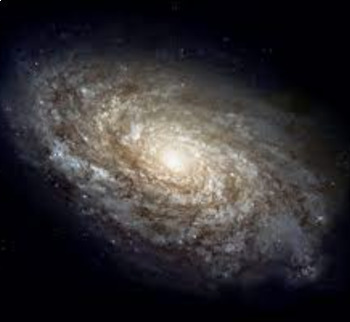
AP Physics C: Mechanics Ultimate Lab Manual WITH SOLUTIONS
This editable manual has a complete set of laboratory activities for the course! There is a total of 18 laboratory activities covering motion, forces, circular motion, conservation of mechanical energy, conservation of momentum, rotational motion, the parallel axis theorem, angular momentum, Newton's law of universal gravitation, simple harmonic motion, and much more! Each Lab uses everyday materials. Solutions and teacher's notes are included!
Subjects:
Grades:
9th - 12th, Higher Education
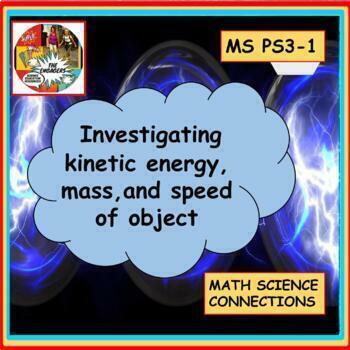
Kinetic energy, mass, and speed investigations NGSS MS PS3-1 CER
These two investigations (GOOGLE and PDF versions) allow students to develop an understanding of the relationship between kinetic energy and mass of an object, and kinetic energy and speed of an object. As students are collecting their own data, it is more understandable compared to being given data to analyze. This activity supports the NGSS standard MS PS3-1A review (or introduction) of some of the key terms such as mass, kinetic energy, speed, energy transformations, and conservation of energ
Subjects:
Grades:
6th - 9th
NGSS:
MS-PS3-1
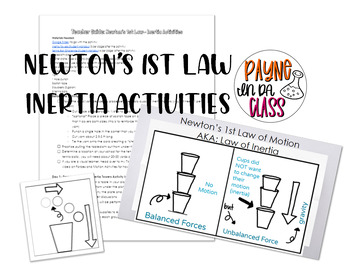
Newton's 1st Law of Motion- Inertia Activities
This teacher guide, slides, and student handouts are guaranteed to increase engagement and understanding in your classroom. Use these activities to teach about Newton's 1st Law of Motion and Inertia. You will need additional supplies (solo cups, cardstock, yarn, tennis balls and buckets), but my step by step teacher guide will tell you how to set up, what prompts to ask, etc.
Subjects:
Grades:
6th - 8th
NGSS:
MS-PS2-2
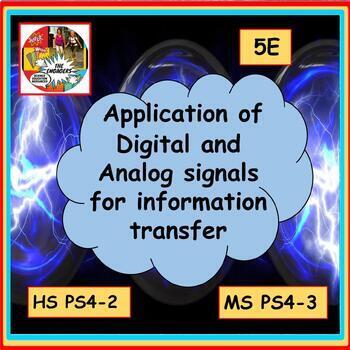
Application of Digital and Analog Signals for Information Transfer 5E MS-PS4-3
Students live in a digital world but the majority of them do not understand what that means. These engaging lessons (GOOGLE and PDF versions) allow students to develop a concrete understanding of the differences between analog and digital devices, and how analog text, sound, and images are converted to digital. This activity supports the NGSS standards MS PS4-3 and HS PS4-2These 5E lessons are launched with an anchor phenomenon which is revisited during the unit. A number of activities (shown b
Subjects:
Grades:
6th - 12th
NGSS:
HS-PS4-2
, MS-PS4-3
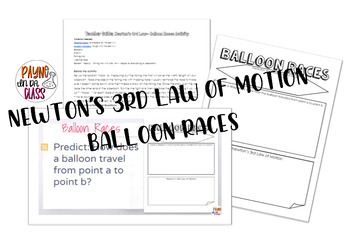
Newton's 3rd Law- Balloon Races Engagement Activity
This teacher guide, slides, and student handout is guaranteed to increase engagement in your classroom. Use this activity to begin learning about Newton's 3rd Law of Motion. You will need additional supplies (fishing line, masking tape, straws, and balloons), but my step by step teacher guide will tell you how to set up, what prompts to ask, etc.
Subjects:
Grades:
6th - 8th
NGSS:
MS-PS2-1
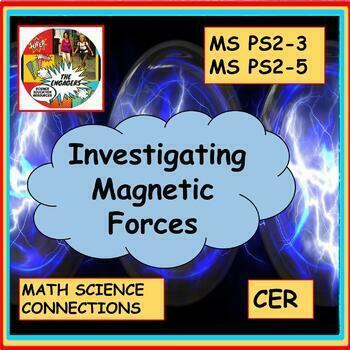
Investigating magnetic forces NGSS MS-PS2-3 MS-PS2-5 CER
This engaging unit (GOOGLE and PDF versions) allows students to develop an understanding of magnetic forces and their effects, the relationship between magnetism and electricity, and how useful magnets are in our lives. The lessons fully support the NGSS standards MS PS2-3 and MS PS2-5.These lessons are introduced with an anchor phenomenon which is revisited frequently during the unit. In this unit, these key questions are investigated:What materials are magnets made of?What materials are attra
Subjects:
Grades:
5th - 9th
NGSS:
MS-PS2-3
, MS-PS2-5
Also included in: Forces and Interactions Unit Bundle NGSS Aligned STEM CER
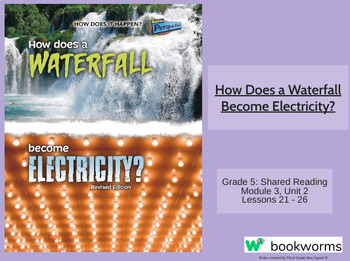
"How Does a Waterfall Become Electricity?" Google Slides- Bookworms Supplement
Bookworms Curriculum Supplement: Grade 5 Shared Reading- Module 3, Unit 2: Physics, Lessons 21-26 (equivalent to 1 week of lessons). These lessons correlate with the book "How Does a Waterfall Become Electricity?" by Robert Snedden.This resource is editable through Google Slides and this product includes learning targets, standards, "I can" statements, word study/ vocabulary, text connections, choral reading slides, timer embedded when appropriate, discussion questions, teacher planning notes, a
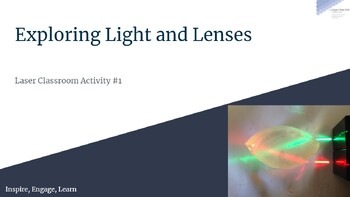
Exploring Light and Lenses: Laser Classroom Activity #
In this activity students are introduced to and explore gelatin lenses and lights. They use cookie cutters to cut gelatin into concave and convex shapes. Students shine lights through their gelatin shapes. Students observe the effects of passing light through gelatin lenses. Students repeat their explorations, changing the shape or orientation of their lenses, or a combination of both. Students record their work for each combination of light, lens, and lens orientation, making drawings of an
Subjects:
Grades:
4th - 7th
NGSS:
MS-PS4-2
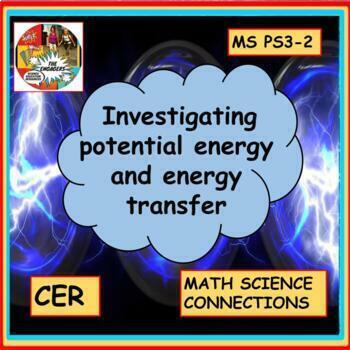
Investigating Potential Energy and Energy Transfer NGSS MS PS3-2 CER
These engaging lessons (GOOGLE and PDF versions) allow students to develop an understanding of the relationship between gravitational potential energy, the mass of an object, and the height of the object, and also how energy is transferred when two objects interact. This activity supports the NGSS standard MS PS3-2A review (or introduction) of the key terms kinetic energy, potential energy, the law of conservation of energy, the connection between force and energy, and mass is given.Students wil
Subjects:
Grades:
5th - 9th
NGSS:
MS-PS3-2
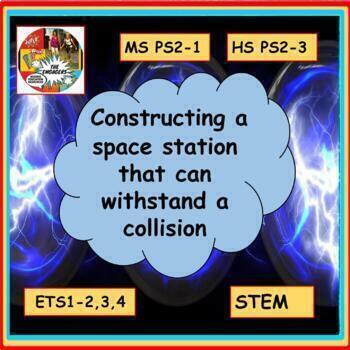
CONSTRUCTING A SPACE STATION THAT WITHSTANDS A COLLISION: STEM MS-PS2-1 HS-PS2-3
This highly engaging engineering and design project (GOOGLE and PDF versions) allows students to gain a greater understanding of why we need to build space stations that can withstand collisions.The students first learn about crumple zones and why they are helpful in a collision.Students design, construct, and test three crumple zones (made of simple materials) to see which is the best for attachment to their space station. A video showing student examples is included.Students then design, const
Subjects:
Grades:
6th - 12th
NGSS:
MS-ETS1-2
, MS-ETS1-4
, MS-ETS1-3
, MS-PS2-1
, HS-PS2-3
Also included in: Newton's Third Law Bundle NGSS MS PS2-1 STEM MS ETS1-2,3,4

AP Chemistry 9.1 Intro to Entropy Guided Inquiry Investigation Teacher Guide
This is the teacher guide that accompanies a guided inquiry investigation for AP Chemistry standard 9.1 Intro to Entropy. Students use the statistical definition of entropy as the number of microstates that correspond to a particular macrostate. Students use several different statistical models to draw conclusions about the relationship between entropy, statistics, temperature, diffusion, and states of matter. Teacher notes and answers are written in red.
Subjects:
Grades:
9th - 12th
NGSS:
HS-PS3-4
Also included in: AP Chemistry 9.1 Intro to Entropy Guided Inquiry Investigation

Exploring the properties of the EM spectrum 5E NGSS MS PS4-2
These engaging lessons (GOOGLE and PDF versions) give students a concrete understanding of how the Electromagnetic spectrum (EM) is organized, and the properties and uses of each type of wave.These lessons support the NGSS standard MS PS4-2These lessons follow the 5E model: Engage - An engaging phenomenon is presented.Explore - Students determine the organization of the spectrum. Students identify some of the properties of radio waves, infrared light, ultraviolet light, and microwaves through f
Subjects:
Grades:
6th - 9th
NGSS:
MS-PS4-2
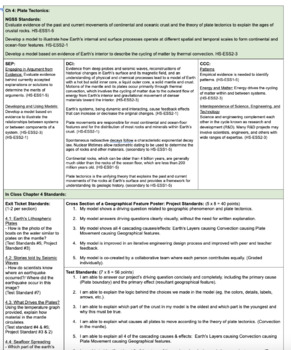
ENTIRE YEAR NGSS PHYSICS of Standards for Standards Based Grading
This is the document I have used to develop a standards based grading system in my high school physics classroom. If you are trying to launch into a SBG, this would be an excellent place to start. I developed it as part of a Stanford University Graduate School of Education course. These standards are NGSS and project aligned - for each unit there is a set of Project standards (graded in a group) AND a set of Test Standards (graded individually). Units included: 1: Plate Tectonics2: Motion &
Subjects:
Grades:
9th - 12th, Staff
NGSS:
HS-ESS1-6
, HS-ESS2-3
, HS-ESS2-1
, HS-ESS1-4
, HS-ETS1-2
...
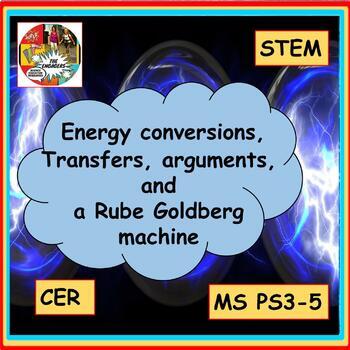
Energy conversions, transfers, arguments, and a Rube Goldberg machine CER STEM
These highly engaging lessons (GOOGLE and PDF versions) allow students to gain a greater understanding of energy conversions, kinetic energy transfer, and the application of energy conversions and energy transfer when building a Rube Goldberg machine.These lessons are launched with an anchor phenomenon which is revisited during the unit. Students initially learn about the difference between kinetic energy and potential energy, the law of conservation of energy, and the nine types of energy.Ener
Subjects:
Grades:
5th - 12th
NGSS:
MS-ETS1-2
, MS-ETS1-4
, MS-PS3-5
, MS-ETS1-3
, HS-PS3-3
Also included in: Energy Unit bundle NGSS aligned STEM CER

Exploring sound energy NGSS MS PS4-2 CER
These engaging lessons (GOOGLE and PDF versions) give students a concrete understanding of how we generate sounds, the frequencies that we can hear compared to different animals, the fact that sound waves need a medium to travel through, and the differences between sound traveling through solids, liquids, and gasses.These lessons support the NGSS standard MS PS4-2These lessons are launched with an anchor phenomenon which is revisited at the end of the unit. An explanation of the phenomenon is g
Subjects:
Grades:
5th - 9th
NGSS:
MS-PS4-2

Investigating connections between energy transfer, mass, material, & temperature
These highly engaging lessons (GOOGLE and PDF versions) will allow students to develop an understanding of the relationship between thermal energy transfer, the mass, the type of matter, and the change in the average kinetic energy of the matter as measured by the temperature. These lessons are launched with an anchor phenomenon which is revisited during the unit. A review (or introduction) of some of the key terms such as mass, kinetic energy, temperature, thermal energy, and heat is given.In
Subjects:
Grades:
6th - 10th
NGSS:
MS-PS3-4
Also included in: Energy Unit bundle NGSS aligned STEM CER
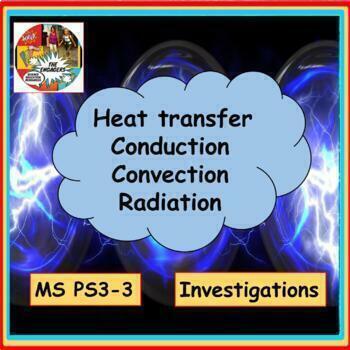
Heat transfer (conduction, convection, radiation) investigations NGSS MS PS3-3
These engaging lessons (GOOGLE and PDF versions) allow students to develop an understanding of how heat is transferred by conduction, convection, and radiation.These lessons are introduced with an anchor phenomenon which is revisited at the end of the unit. Common misconceptions about heat transfer are also addressed in these activities. This activity supports the NGSS standard MS PS3-3Optional slides are included for teachers planning to have students design a solar oven after this unit. Stude
Subjects:
Grades:
5th - 9th
NGSS:
MS-PS3-3
Also included in: Thermal energy, heat transfer, solar oven bundle STEM MS PS3-3
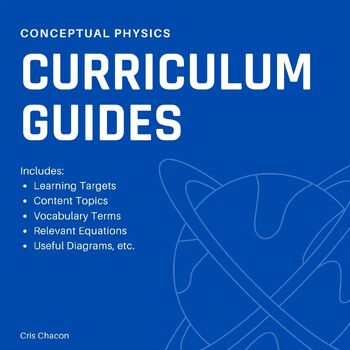
06.5 - Circular Motion Curriculum Guide
Each Curriculum Guide includes a Unit Overview document and a Student Self Assessment document. This is an excellent way to communicate to students what content will be covered in the unit, when it will be covered, and what learning targets they are expected to master.The Unit Overview contains the following:Front PageTopics coveredAssessments (with tentative dates that you can modify)Document Order/List (useful for conducting quick and efficient binder checks)Equations used in the unitBack Page
Subjects:
Grades:
8th - 11th
CCSS:
NGSS:
MS-ETS1-2
, MS-ETS1-4
, MS-ETS1-1
, MS-ETS1-3
Also included in: Circular Motion Unit Bundle
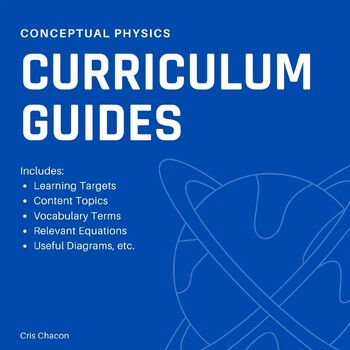
07.5 - Momentum Curriculum Guide
Each Curriculum Guide includes a Unit Overview document and a Student Self Assessment document. This is an excellent way to communicate to students what content will be covered in the unit, when it will be covered, and what learning targets they are expected to master.The Unit Overview contains the following:Front PageTopics coveredAssessments (with tentative dates that you can modify)Document Order/List (useful for conducting quick and efficient binder checks)Equations used in the unitBack Page
Subjects:
Grades:
8th - 11th
CCSS:
NGSS:
MS-ETS1-2
, MS-ETS1-4
, MS-ETS1-1
, MS-ETS1-3
Also included in: Momentum Unit Bundle
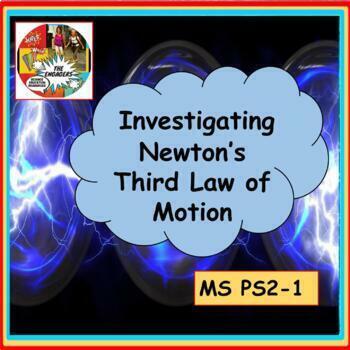
Investigating Newton's Third Law of Motion MS PS2-1
Students move through five stations that guide them to “discover” Newton’s third law (GOOGLE and PDF versions). Students then complete a summary worksheet where they identify the action and reaction involved for each station. Next they apply their knowledge of Newton’s third law to three new situations. This can be used as a formative assessment of student understanding.These activities support the NGSS standard MS PS2-1 Easily obtainable materials are used for these stations.Possible student re
Subjects:
Grades:
5th - 9th
NGSS:
MS-PS2-1
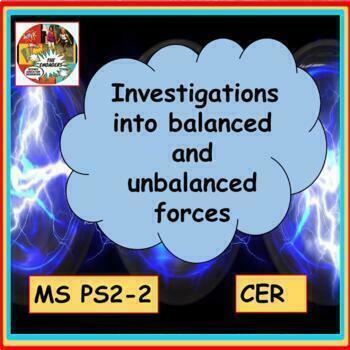
Investigations into balanced and unbalanced forces MS PS2-2 CER
These engaging stations (GOOGLE and PDF versions) allow students to start to construct their own understanding of unbalanced and balanced forces including answers to the following questions:What is a force?What is the strength of the unit Newton?How does a different force affect the same object?How does the same force affect objects with different masses?What is the difference between balanced and unbalanced forces?How do you calculate the net force?What causes objects to move? Station 6 will re
Subjects:
Grades:
5th - 9th
Types:
NGSS:
MS-PS2-2
Also included in: Force and Motion Unit Bundle NGSS ALIGNED STEM CER
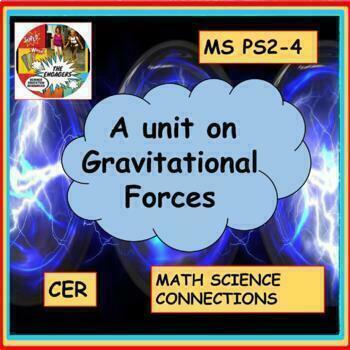
A unit on gravitational forces MS PS2-4 CER
These engaging lessons (GOOGLE and PDF versions) allow students to develop an understanding of the relationship between gravitational forces and two objects, and how mass of the objects and distance between them affect these forces. Common misconceptions about gravitational forces are also addressed in these activities. This activity supports the NGSS standard MS PS3-2The following key questions are answered by doing a number of activities:What is a gravitational force field?What is the differen
Subjects:
Grades:
5th - 9th
NGSS:
MS-PS2-4
Also included in: Forces and Interactions Unit Bundle NGSS Aligned STEM CER

Investigating Newton’s Second Law NGSS MS PS2-2 CER
These investigations (GOOGLE and PDF versions) allow students to develop an understanding of the relationship between mass, sum of the forces, and change of motion. As students are performing the investigations, the equation for Newton’s second law, when introduced, will be easily understandable. Instructions are given for both in class investigations and online investigations.This activity supports the NGSS standard MS PS2-2A review (or introduction) of the key terms mass, speed, velocity a
Subjects:
Grades:
5th - 9th
NGSS:
MS-PS2-2
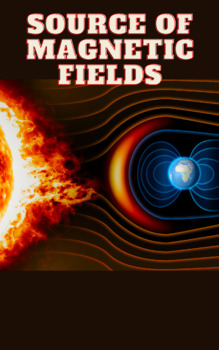
Source Of Magnetic field
In chapter 1 we define what we mean by magnetic field and discussed at length the effect magnetic field has on moving electric charges, In this chapter we consider the manner which magnetic field are produced.
Grades:
9th - 12th, Higher Education, Adult Education, Staff
Types:
Showing 1-24 of 47 results





